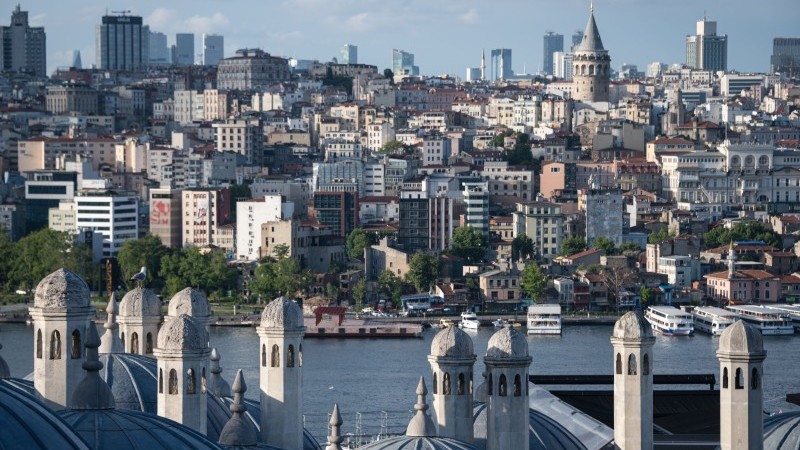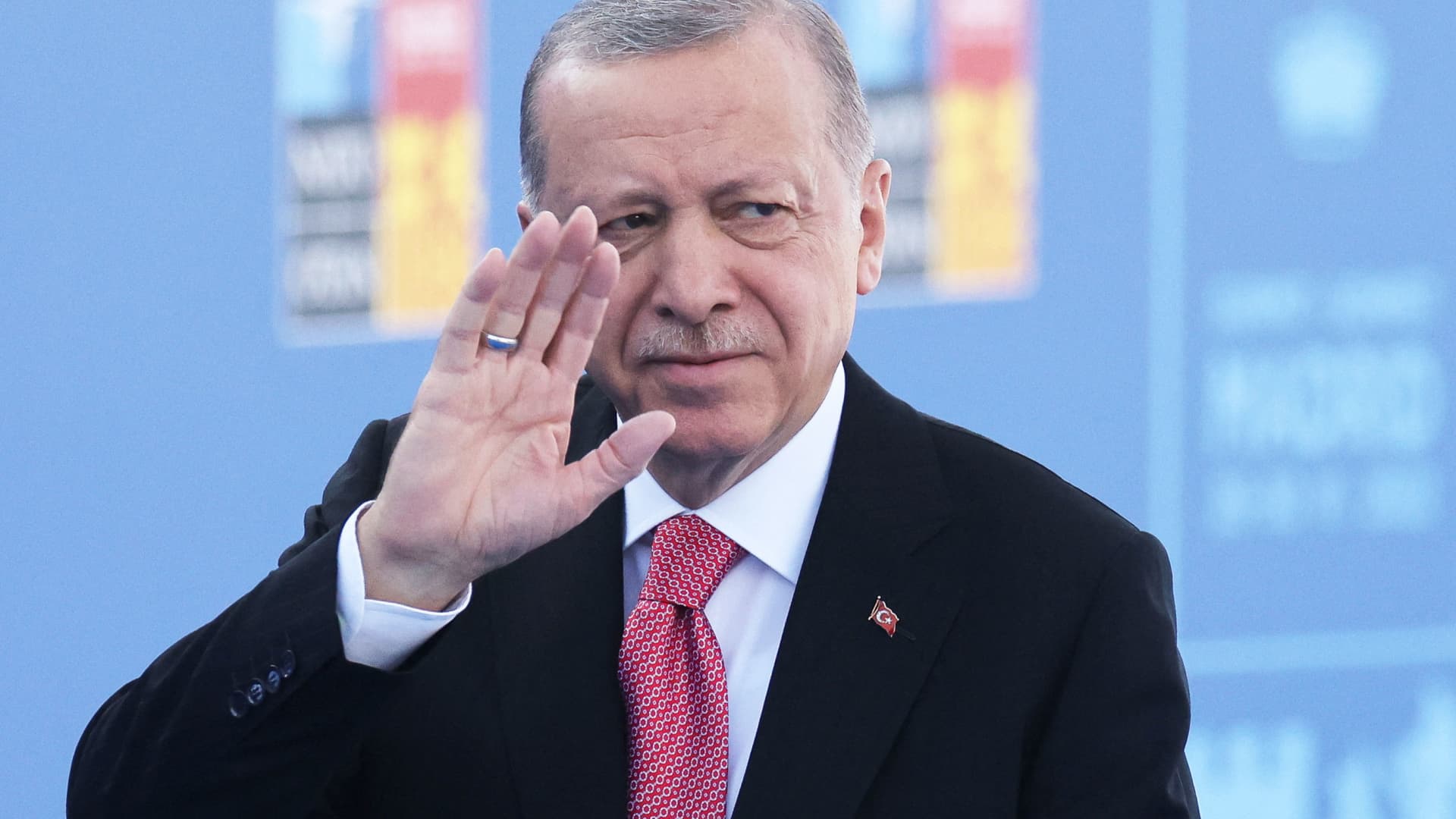Volunteers from animal shelters in Türkiye, Syria race against time to save thousands of animals trapped under rubble
A rescue worker, grinning from ear to ear, pulls a reluctant cat from the arms of his trapped owner, university student Kerem Cetin, in a video from Türkiye’s Hatay province.
Key points:
- Cats, dogs, birds, aquarium fish, other small pets and farm animals have been rescued from the rubble
- Animals played a key role in rescuing humans, with pets leading rescue teams to their trapped owners in the nick of time
- Housing saved animals will be challenging as shelters are already at capacity
Only one of Mr Cetin’s hands were visible from under the rubble where he remained trapped after his home collapsed in a series of devastating earthquakes that began in Türkiye and Syria two weeks ago.
The emergency crew said Mr Cetin had asked them to please save his cat Strawberry first, before they dug him free.
The ecstatic rescuer hugged Strawberry and transferred her to safety before freeing Mr Cetin — a rare moment of hope amid the devastation that has so far claimed the lives of more than 47,000 people.
While emergency teams work around the clock to save people, volunteers from animal shelters in Türkiye and Syria have also saved thousands of pets inlcuding cats, dogs, birds, rabbits, aquarium fish and turtles.
Horses, donkeys, sheep, chickens and other livestock also suffered injuries or were trapped after their barns collapsed.
In opposition held areas of Syria, the Syrian Civil Defence, known as the White Helmets, have been rescuing both animals and people from the rubble.
Volunteer Ismail al Abdullah said they had rescued everything from cats to cows with each requiring different techniques.
With cats you need to prepare a basket or carrier to contain them, whereas a cow requires strong supports to lift it: “It’s all totally different,” he said.
One story circulating on social media was of a cat adopted by firemen after a rescue in Türkiye.
Fireman Ali Cakas named the cat Enkaz, meaning rubble in Turkish, after saving him 129 hours after the earthquake.
In other cities, local organisations including House of Cats Ernesto in Aleppo and Haytap, an animal rights federation in Türkiye, have been climbing through the rubble to rescue trapped animals, providing veterinary care and housing to those who, like so many families, have been left homeless.
“It’s a kind of dangerous work because we don’t have a rescue team for animals,” said Ahmet Kemal Şenpolat, Haytap’s president.
Haytap estimate they have rescued around 700 dogs and cats, as well as countless other pets and livestock.
Another magnitude-6.4 earthquake struck the border region of Türkiye and Syria on Monday.
More than two weeks after the most devastating earthquake, they still receive up to 30 notifications daily of animals in need, Mr Şenpolat said.
“Animals have more power to survive compared to humans so we are hopeful that we can still find surviving animals under the devastation,” he told the ABC on Monday.
“Even yesterday, we have rescued many, many animals with broken legs or lacerations — dogs and cats. Some of them are OK but they’re starving, starving to death.”
Animal heroes help save human lives
Animals have also played a part in the rescue of people, leading emergency crews to sites where their owners have been trapped under rubble.
One cat led rescuers to a house were two small children and an elderly woman were found, while another cat’s cries led to the rescue of a mother, two children, and a baby.
Trained rescue dogs were also shipped in to locate the injured.
Even Strawberry the cat may have done her part in saving Mr Cetin, keeping him warm in temperatures that often dropped below zero.
Mr Şenpolat said many dogs and cats crawled through the rubble to reach their beloved owners where they cuddled together, sharing their body heat.
There were also heartbreaking scenes as cats and dogs searched in vain through the rubble of their former homes looking for their owners.
“It was sometimes difficult to get animals to leave deceased owners,” Mr Şenpolat said.
“They stay with the bodies, until the body is recovered; until then, they refuse to leave them.”
But the reunion of survivors and their pets has also brought tremendous healing.
“When you give that pet to that family, that surviving family, he cries, he just hugs [that pet],” Mr Şenpolat said.
“Because they lost everything, everything, they don’t have any house, the house that they see everyday is just crumbled.
“Being alive — a cat or a dog, even a fish or a bird — when they see it again after a couple of days, you know, emotionally they get much better.”
Mr Şenpolat said about 60 per cent of rescued pets are reunited with their owners — sometimes via microchips or by contacting the owners of the home where they were found.
In cases where the owners can’t be found, many have been rehomed.
But strays have not fared as well.
Istanbul and other cities throughout the region are famous for well-fed, friendly street cats, as part of what Mr Şenpolat described as a cultural history of “social animals”.
People frequently leave food and water outside their homes or businesses for these friendly strays.
“We mostly think that this is a kind of privilege, I mean, when you come to Istanbul, you can see a stray animal in a ferryboat, or in the metro, it’s very nice,” he said.
“However, to be honest, I have to admit that the people are not eager to adopt those stray animals.”
Struggle for support
With so many human casualties, organisations like Haytap have struggled to find funding.
“We are not living in a Western country,” Mr Şenpolat said, adding that in Türkiye, the focus is on saving people, especially children.
The International Fund for Animal Welfare (IFAW) has been supporting the work of both Haytap and House of Cats Ernesto through international donations.
Jennifer Gardner, IFAW’s disaster resilience manager, said animal welfare groups were struggling to treat and house so many lost and injured animals, as well as assist families who have lost everything to care for their beloved pets.
“Families are trying to hang on to their animals, and might just need a little bit of extra help as they’ve lost everything,” she said.
In the meantime, she said wildlife had fared better, describing how often the first indication that an aftershock is coming is birds flying from the rooftops.
“So wildlife seem to have a little bit more of a sense, and they do a lot better in earthquakes than the cats and dogs and domesticated animals.”
Ms Gardner said housing rescued animals was a challenge as shelters were already at capacity and rehoming pets after a disaster was difficult because few people are in any position to care for them.
“The immediate disaster is now, but the recovery of these communities, it’s going to take many months or years,” she said adding that “long-term” support is crucial to the survival of these rescued animals.
“Having sustained donations is really what is going to help animals long-term in Türkiye and Syria.
“We don’t want families to be separated because they can’t afford a bag of dog food. We want to be able to keep them together.”
This article contains content that is only available in the web version.



